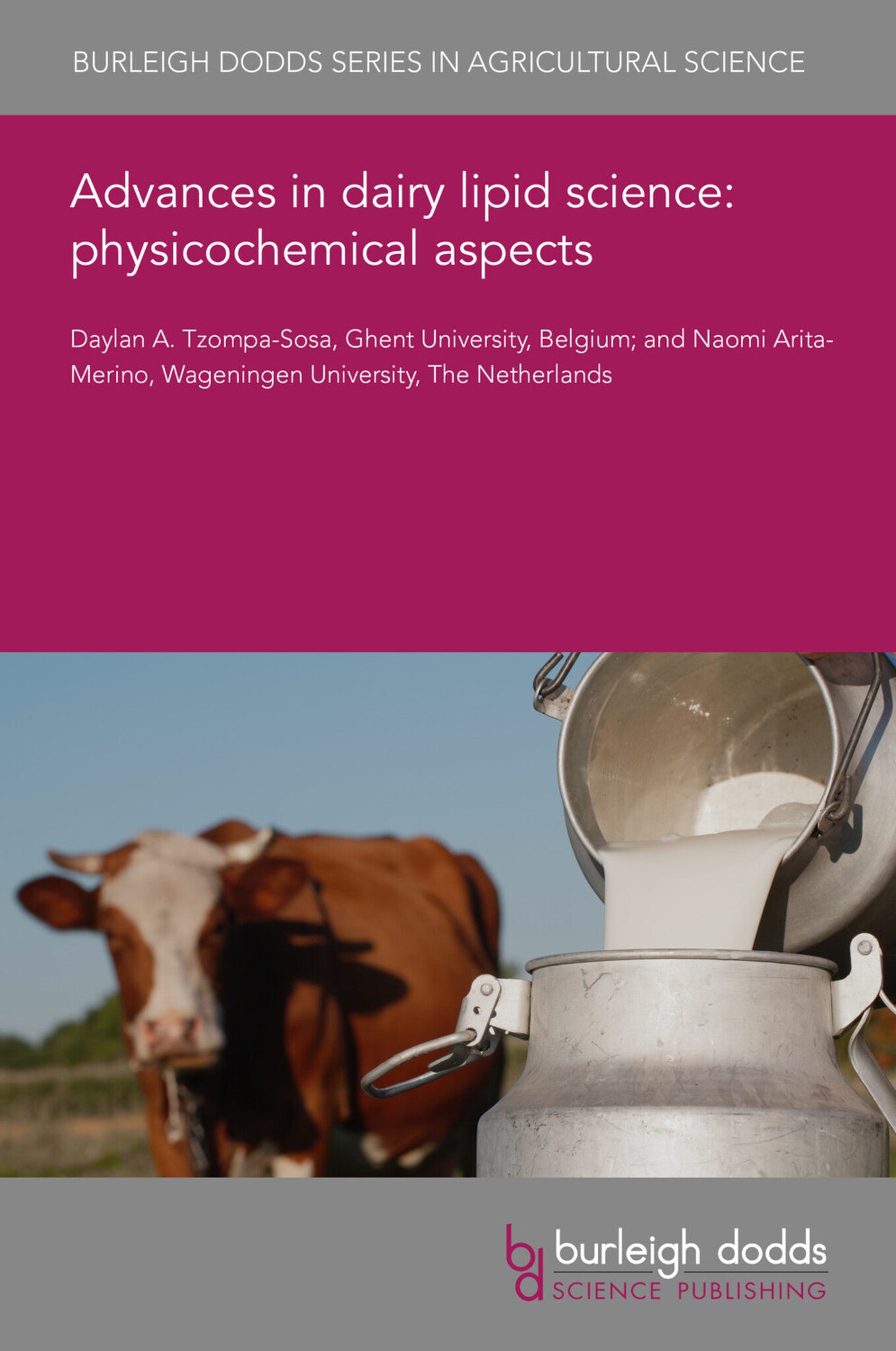We're sorry. An error has occurred
Please cancel or retry.
Advances in dairy lipid science: physicochemical aspects
Regular price
£25.00
Sale price
£25.00
Regular price
£25.00
Unit price
/
per
Sale
Sold out
Re-stocking soon
The physical properties of milk fat are intrinsically related to its chemical composition. This in turn is linked to animal feeding and to a lesser extent to genetics. Understanding the relation be...
Read More

Some error occured while loading the Quick View. Please close the Quick View and try reloading the page.
Couldn't load pickup availability
- Format:
-
14 March 2022

The physical properties of milk fat are intrinsically related to its chemical composition. This in turn is linked to animal feeding and to a lesser extent to genetics. Understanding the relation between these factors is utmost important to define the effects of animal feeding strategies on milk fat and milk fat rich products. In the present chapter, an overview of high-throughput techniques useful in the study of milk fat triacylglycerols is given. The latest advances in the study of milk fat microstructure structure are summarized. Moreover, the relation between cow’s feeding regimes, milk fat composition and its crystallization microstructure is presented. Finally, we present two cases of study where chemical and physical techniques are used to understand the milk fat thermal behavior and microstructure.

Price: £25.00
Publisher: Burleigh Dodds Science Publishing
Imprint: Burleigh Dodds Science Publishing
Series: Burleigh Dodds Series in Agricultural Science
Publication Date:
14 March 2022
ISBN: 9781801464390
Format: eBook
BISACs:
TECHNOLOGY & ENGINEERING / Agriculture / Animal Husbandry, Dairy farming, TECHNOLOGY & ENGINEERING / Agriculture / Sustainable Agriculture, Sustainable agriculture, Animal husbandry

1 Introduction 2 Chemical analysis techniques in dairy lipids 3 Milk fat crystallization throughout the different length scales 4 Crystallization as affected by lipid composition 5 Case studies: Practical consequences of milk fat composition variability 6 Conclusion 7 Future trends in research 8 Where to look for further information 9 References



